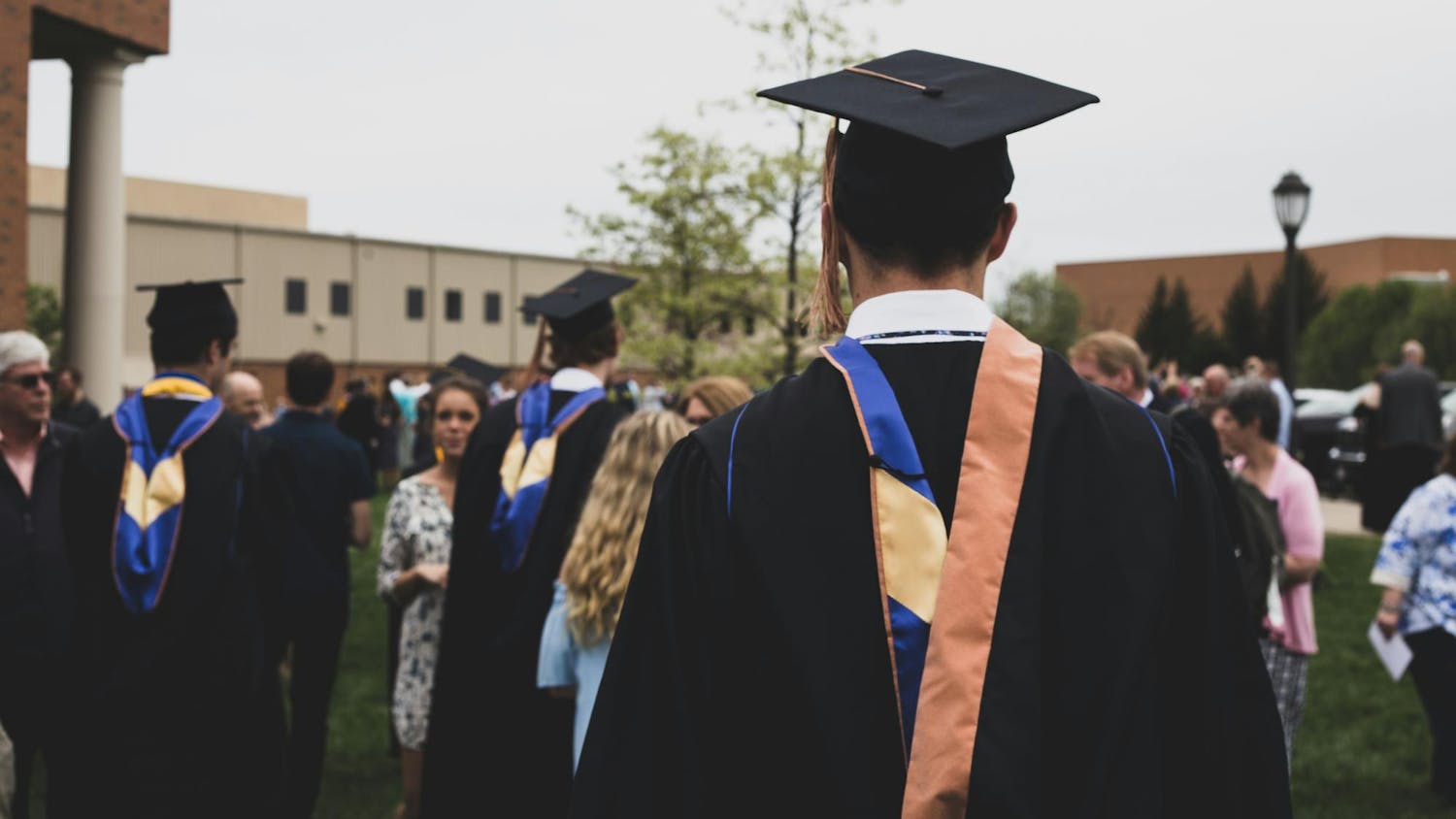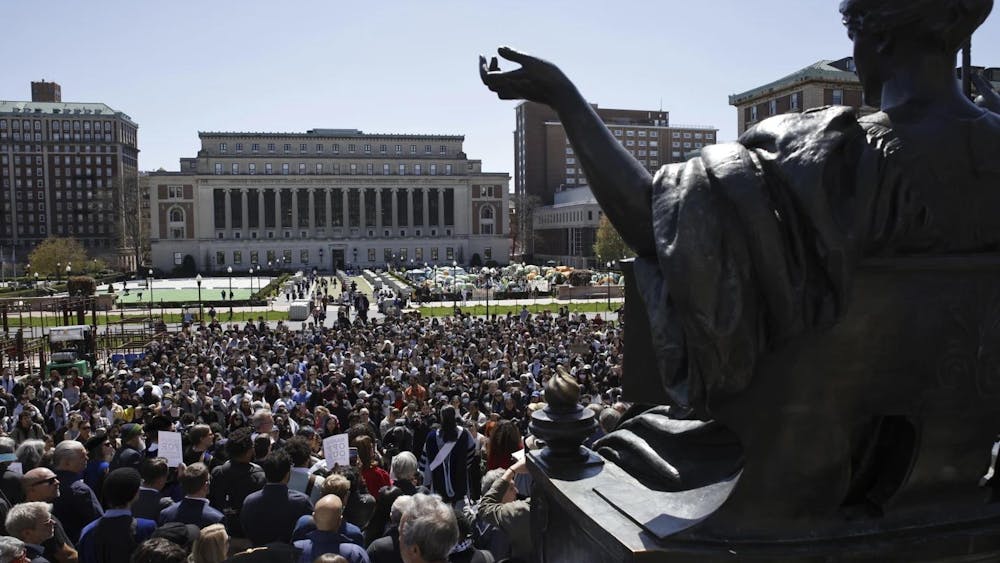Editor's note: This is the second installment in a four-part series commemorating the 40th anniversary of the Notre Dame 10 and exploring the history of student activism on campus. The first part introduced the Notre Dame 10 and their protest efforts.
In the fall of 1969, then-University President Fr. Theodore Hesburgh's office door was always open, it seems.
Reflecting on the time of what he calls "the student revolution" in his new office in the Library named for him, Hesburgh described the protest fervor that swept across a nation at war in a foreign land and turned college campuses into battlefields.
Several of those students came to him to "talk about the problems of the day," he said — at times in the middle of the night.
During the Vietnam War, Hesburgh said, about 250 college and university presidents left or were asked to leave office, one even suffering a heart attack while being confronted by students. Campuses transformed from reflective sanctuaries of learning to institutions wrought with turmoil.
"The whole country, it seemed, was up for grabs," Hesburgh said, "and I thought it was high time that someone set down what the rules of the game were."
The game: protesting the War, the production of napalm, a mixture of gasoline and thickening agents used in incendiary bombs, and the draft on college campuses.
Colleges and universities across the country, along with law enforcement, struggled to find peaceful alternatives to student-led riots and demonstrations, at times tragically failing to settle the crowds.
Hesburgh, in a letter written Feb. 17, 1969, outlined a set of criteria for disruptive protests called the 15-minute rule.
The letter, sent to faculty and students, which focused on the rights of the established Notre Dame community, said: "we cannot allow a small minority to impose their will on the majority who have spoken regarding the University's style of life."
"The letter I wrote, in rather general terms," Hesburgh said, "took on the national crisis and then said what are we going to do at Notre Dame? I said let's be clear about a few basic things: Every student at Notre Dame is free to protest anything they don't like — either at the University or in the world generally or in our country especially.
"The only rules of the game were that this had to be done in a civilized fashion, that universities are places of civil discussion, not rioting and destroying property," he said.
The letter, Hesburgh said, was carried in full in the New York Times, The Washington Post and the Wall Street Journal.
"In a way that word went around the country and it became a kind of turning point in the student revolution," he said. "People became more civilized, order returned to the campus."
The order was short-lived, and Hesburgh's 15-minute rule was enacted nine months later, when the now-famous Notre Dame 10, on campus today for the 40th anniversary of their demonstration, protested against Dow Chemical, Co., the producers of napalm, and the Central Intelligence Agency (CIA) recruiting students for jobs on campus.
"Protest is always legitimate at a university because you have differences of opinion. It was perfectly obvious that most students in those days were against the Vietnam War," Hesburgh said.
The leaders of the Notre Dame 10 were some of those who knocked on Hesburgh's door in the middle of the night, at about 2 a.m.
The group said they had been walking up and down campus with signs, but their efforts were not having any effect: students were still being interviewed for jobs with Dow-CIA.
That's when they went to see the University president.
"I said, ‘Well, that's their privilege.' Your privilege is to protest and carry signs if you want, but don't impede their rights either," Hesburgh said.
The group warned Hesburgh they would "put it to the test," he said, leading to the demonstration in the Main Building and their eventual suspensions.
"You know the rule, that if you're disturbing the common, ordinary life at Notre Dame and preventing other students from doing what they want to do, you're out of order and you're not allowed to continue," Hesburgh told the group.
The 15-minute rule, Hesburgh's stand against campus unrest, "changed the whole mood in the country," he said. "It was kind of a historical moment for higher education in America and Notre Dame became a kind of symbol of getting out of that disorder and getting back into order again so the students could do what they come here to do, namely to study and get a degree."
Forty years later, the game has changed.
Wars in Iraq and Afghanistan, as well as social and moral debates have sparked students to protest and demonstrate in recent years, but not in the same way as their predecessors of the 1960s.
"I think students ought to be interested and involved in the great issues of our time — and these are great issues. It's perfectly right that students should have a point of view on these issues, should be able to express that, should be able to have meetings to discuss it, and even to come up with some solutions if they can," he said. "That's a legitimate part of University life and no one is against that."
Student activism these days, Hesburgh said, can be most effective at an academic, rather than a destructive level.
"The only thing is that we have to do this in an intelligent, orderly way, not by destroying property or creating disorder in the University, which needs a certain amount of peace to go on with its work," he said.
One of his proudest moments came during last year's Commencement, when the student body banded together in the face of outsiders' disruptions that threatened the University community.
"They stood firm in their principles, they stood up for what was right, and when things looked a little dicey … they stood up as one person, men and women graduates, and they put their fists in the air and they shouted, ‘We are Notre Dame,'" Hesburgh said. "That was a proud moment for the whole university, and it brought tears to my eyes."
Hesburgh will concelebrate a Mass with Fr. Emmanuel Charles McCarthy, lawyer and advocate of the Notre Dame 10 this afternoon. Several members of the Notre Dame 10, along with McCarthy, will present at a panel titled "Being a Christian in a Catholic University in times of war: has 40 years changed the conversation?" at 7:30 p.m. in Geddes Hall.
The third installment in the series will recap the Notre Dame 10's 40th anniversary events on campus. The fourth will feature current and recent Notre Dame students sharing their views on the issues that sparked their activism. Both installments will run in Thursday's edition.













